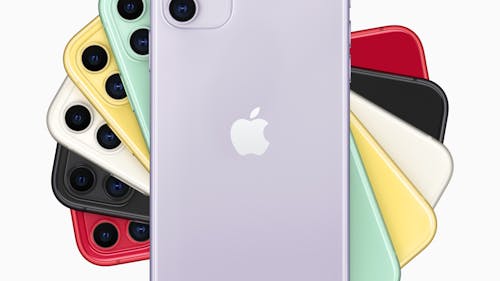iPhone's slowing down?: Blame planned obsolescence

Unless you’ve been living under a rock, then you know that Apple just introduced the world to the iPhone 11 and iPhone 11 Pro. While on the surface there’s nothing inherently wrong with the products, they do connect to a much larger issue within society: planned obsolescence.
What that essentially means is companies make products old-fashioned or out-of-style through frequent design changes, discontinuing parts or using subpar materials.
Technology has to be one of the biggest culprits of planned obsolescence. Just like Apple, other companies will come out with the “latest and greatest” model ever, marketing their products to be high quality and claiming that no other company can match their technological and design prowess.
Yet, their products break down either due to bad materials, malfunction or slow-down (i.e. Apple’s battery), requiring consumers to buy a new one or try to fix them at a high price.
There’s plenty of other companies out there that do this. Car manufacturers also use planned obsolescence. Every year they come out with new models that vary ever so slightly from last year’s model, only to discontinue the production of parts that can be used for older models so that consumers have to buy the new one.
Why do companies do this? Well, it’s partly due to money, but it’s also because the consumers demand it. Companies, of course, want to maximize profits, but they’re able to do this because we buy into consumer culture.
People are entitled to have opinions about products. If they don’t like something, then they can contact a company and tell them about it. Maybe the company will do something about it, or maybe they won’t, but the customer feedback and perceived demands of the consumer are what allow companies to roll out all these new models and market it toward the consumer. As long as we create demand, the companies will create new models.
Let’s say that Toyota comes out with a new Prius that's even better than last year’s model and it actually even looks different from the previous model. A few months, maybe even weeks go by and customers start reporting back to Toyota about modifications they want to be made: BlueTooth, seat heaters and a sunroof.
The point is, the customer tells them what they want and lo and behold, the next year, Toyota comes out with a new Prius that looks identical to the previous one, but with some, or maybe even all, of the modifications that the consumer requested.
On the Apple website, you can find a comparison chart for almost all of the models that it still makes and see how some of its models have only slight differences, while others are obvious in their modifications. Take a look at any product comparison charts that are available within a company’s website and see what differences you can find between last year’s model and the current one. How much would you really care if the company didn’t make those changes?
It also has to do with marketing. The advertisements for a lot of these products center their campaigns on something that a person may want or think they need. Sometimes commercials for cars will focus on family, making it seem like buying this specific car will lead to a lifetime of happiness and cherished memories.
Cars and technology aren’t the only examples of planned obsolescence. One can make the argument that fashion and video games also fit the definition. Household appliances can also be applied to the term, embracing the saying “they don’t make them like they used to.”
So, if people are aware of this scheme, why do we still buy the new models? There are probably a lot of practical reasons why someone would buy the latest model of anything. Maybe you’re due for a phone upgrade as required by your phone plan or you accidentally dropped your phone down a flight of stairs. Maybe your car finally threw in the towel after 15 years.
But there are other less practical reasons why someone would buy the newest version. Social status comes to mind. By buying these new products that are often pretty expensive, you demonstrate that you have the monetary ability to live a luxurious lifestyle fit with the latest and greatest technological advancements.
Regardless of your motivations, the gravy train that is planned obsolescence will probably be chugging along for the foreseeable future. It’s a tried-and-true market strategy that feeds into our consumer culture, often for better and for worse.



